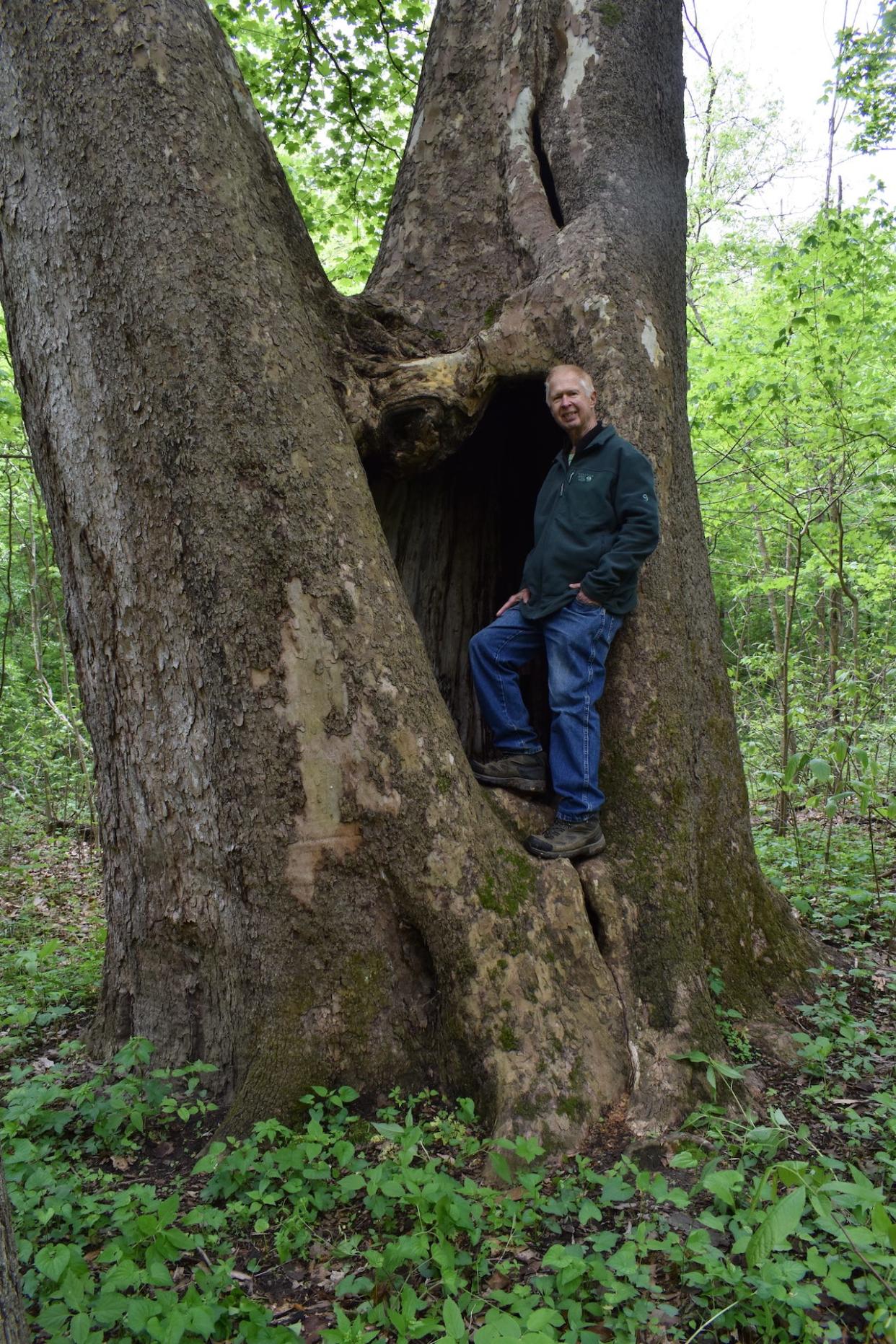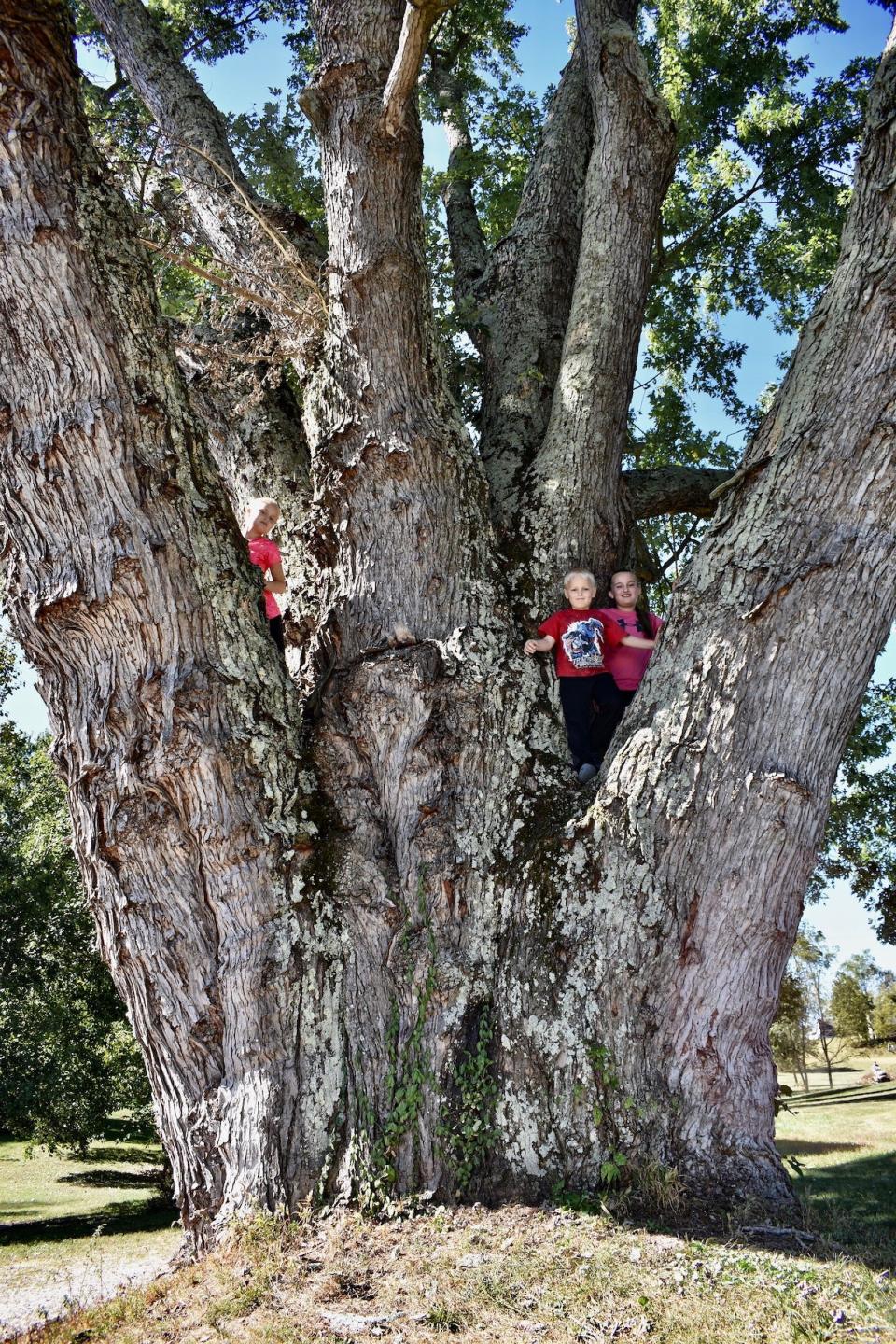Deep roots: Williams man writes book about Hoosier state's magnificent trees

WILLIAMS — Carroll Ritter's dedication to Indiana trees started when he was a boy and his father would take him into the woods and identify the many different species of trees. He learned to tell the difference by looking at a tree's bark, leaves and veining pattern. Those wooded walks fostered an interest about trees that has been a lifelong passion.
The retired science teacher put his knowledge of trees and photography skills to work in a new book about Indiana's trees, but not just any trees. Ritter spent four years, traveling 1,900 miles around the state to document some of the largest, oldest and most unique trees in the state. The result is "Magnificent Trees of Indiana."
Published by Purdue University Press, the hardcover book features 74 trees and 20 old-growth woods.
With its more than 250 color photographs, Ritter said the coffee table format invites readers to learn more about the state's majestic trees and does so in a way that walks the reader through the geologic past, into early pioneer times and onward to the present, all while covering the history, value and economic importance of Indiana's hardwood forests.
Local education news: North Lawrence Community Schools board vote to contract out food services to Chartwells.
"I tried to cover a range of why trees are so magnificent to us," said Ritter during a phone interview with the Times-Mail. "The aesthetic and ecological value is well understood."
Trees also are a source of recreation and contribute to food production — think maple syrup — and the use of Indiana hardwoods in the manufacturing of wood products from Amish furniture crafters to large mills that make trim, doors and paneling injects millions into local economies.
When Ritter set out to write and photograph a book on the state's oldest and biggest hardwood trees, he didn't want to create another tree identification book. There are plenty of those out there and he wanted this to be something different.

Indiana has a registry of the biggest trees of each species. The registry is maintained by the Indiana Department of Natural Resources and published every five years, but most Hoosier residents aren't aware of these giants that tower above the treetops.
"Those trees are the long-time survivors that have stood for a century or more and there hadn't been a book published on these state champion trees of Indiana," he said.
With so many fine examples in the state, it's not easy to choose from the 74 in the book, but Ritter said a few stood out.
"One of the outstanding trees is a black gum in St. Joe County near South Bend. It's a fairly common tree, but the state champion black gum looked far different than what I'd experienced," he said. "It was one of the most perfect trees, tall and grand as I imagine the early settlers must've seen them."
Estimated to be between 150 and 200 years old, that black gum is not the oldest tree featured in the book. Indiana has several species of oak, some of which are 300 years old.
One of the oldest is a Swamp Chestnut Oak in Jennings County that Ritter said truly lives up to the book's title of "magnificent."
"It's one of the most spectacular trees. It's 5 or 6 feet across, 100 feet high and a crown spread of over 100 feet and the fall color was absolutely stunning," he said.
Indiana's biggest trees can be found all over the state and not always where you might think. Yes, many are found on some of Indiana's designated old growth forests and in state parks, but many that Ritter photographed are on private property.
The champion Red Oak is on private land in Gibson County. The champion Hackberry is in Terre Haute growing right beside a garage. Fortunately, most landowners recognize they have unique treasures and are proud to be caretakers and protectors of the state's eco-history, Ritter said.
A walk through Indiana's old growth woods
Indiana's old growth tracts are another feature of the book. In Lawrence County, Spring Mill State Park has Donaldson Woods, which includes 67 acres of undisturbed old growth forest and native trees that are 300 years old. To the south in Orange County, Pioneer Mothers Memorial Forest is an old growth tract managed by the Hoosier National Forest.
For Ritter, nothing else compares to a walk through an old growth woods.
Voting in the primary election? Find out where you can cast your ballot in Lawrence County.
Indiana Primary 2022: Three candidates for Marshall Township trustee.
"When you walk into those old stands, you're walking into early Indiana as the settlers experienced it. Many Hoosiers don't even realize that not only do we have state champion giants, we have these old growth forests, too," he said.
Weaving the two, Ritter said, was really the impetus for the book. To tell the story of Indiana's past through these living trees in a way that's never been done before.
Ritter took nearly all the photos, save for a few taken by his Bedford High School classmate Gary Potts of Fishers.
About the author
Ritter is a retired science teacher with a lifelong interest in trees and wildflowers. He attended Purdue University, received his master’s degree from Indiana University, and completed advanced coursework in field geology from Western Washington University. After retirement, he assisted Sycamore Land Trust, developing an environmental education program working with children of all ages.
An avid mountain hiker, backpacker and photographer, Ritter has logged more than 2,000 miles on trails in the United States and Canada. He has nominated seven state champion trees over the years, including three new ones for the 2020 Indiana Big Tree Register. He lives in Williams, where he practices forest conservation on his own land and still loves and admires his trees.
Book signing at Lawrence County Museum
The Lawrence County Museum, 929 15th St., will host a public book signing May 7 from 10 a.m. to noon. The newly released "Magnificent Trees of Indiana" was written by Williams resident Carroll Ritter and published by Purdue University Press. The 265-page coffee table format allows more than 250 color photographs of the state champion trees, old-growth forests, trees of beauty and how trees are important to people. Many photographs in the book are from Lawrence County.
To help celebrate the book, Ritter will be joined by his friend and former Bedford resident Gary Potts, who contributed to the book. A limited number of copies of the book will be available for purchase that day. Advance orders can be placed on Amazon.com. The price is $34.99, shipping is free. The book can also be purchased at Morgenstern Books in Bloomington. The book can also be ordered from Purdue University Press, using the discount code PURDUE30.
Contact Times-Mail Staff Writer Carol Johnson at cjohnson@tmnews.com or 812-277-7252.
This article originally appeared on The Times-Mail: Carroll Ritter writes book, captures pictures, on Indiana trees

